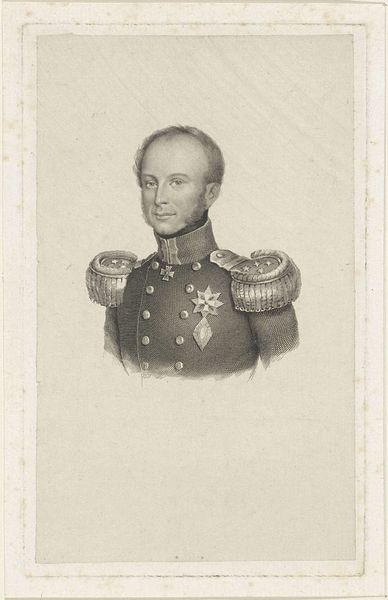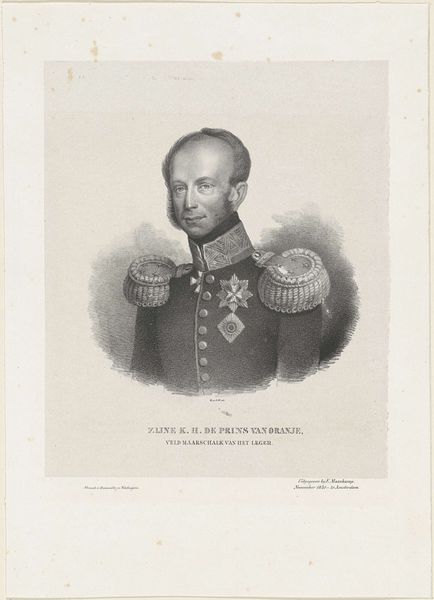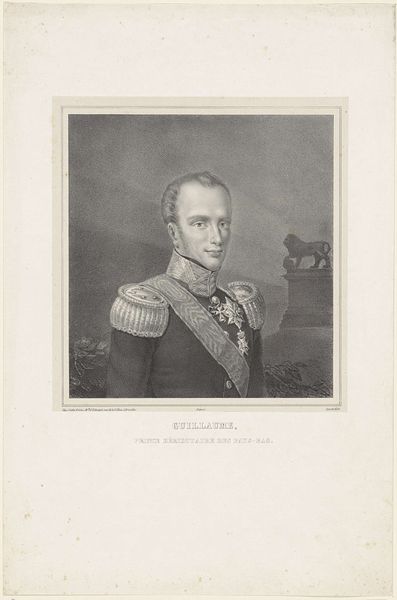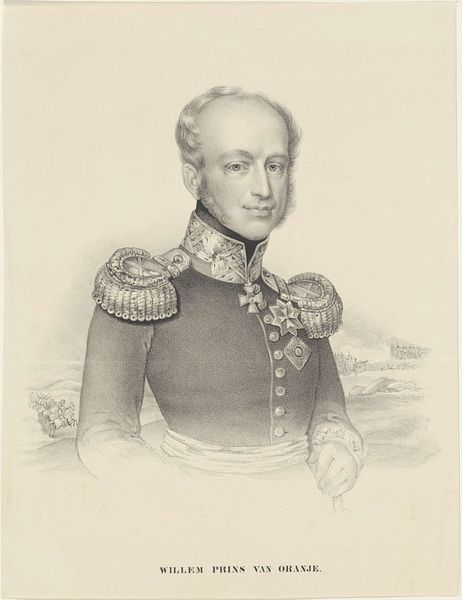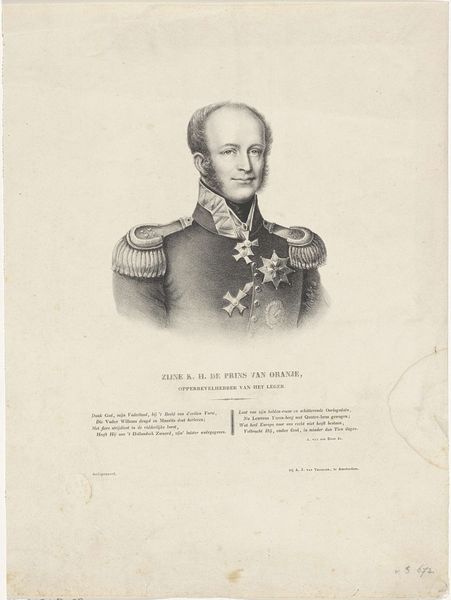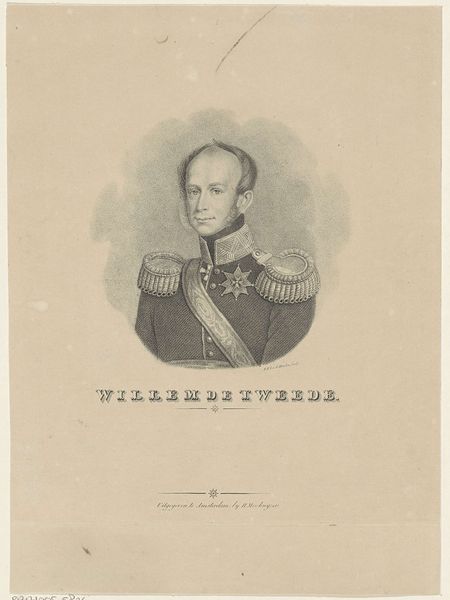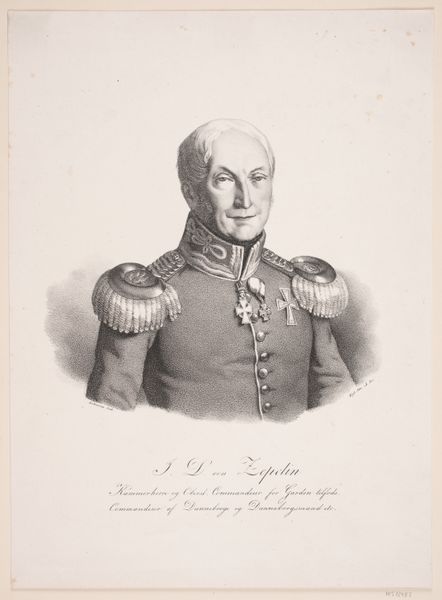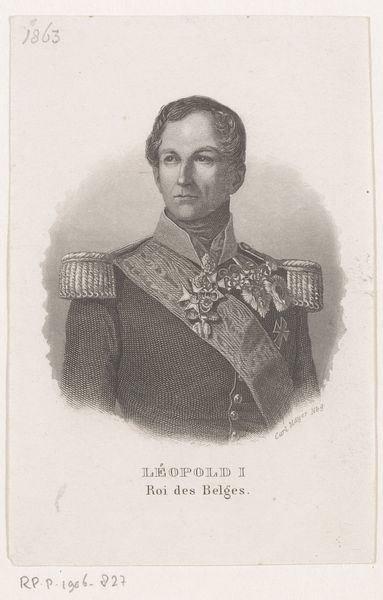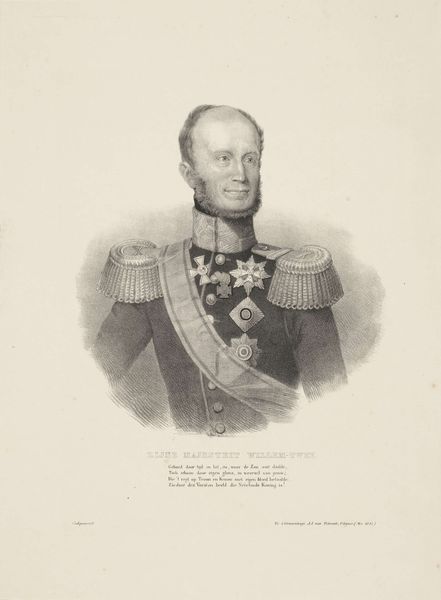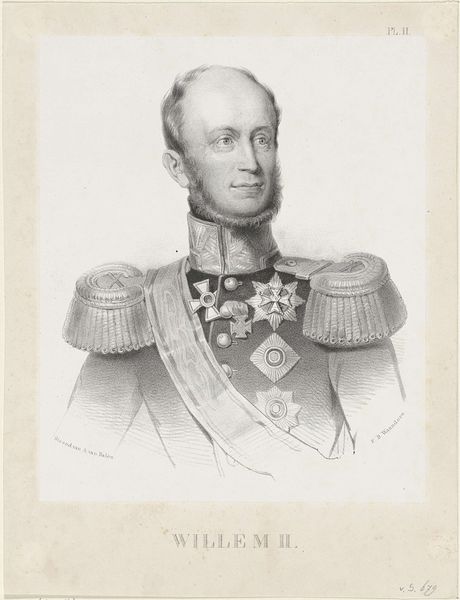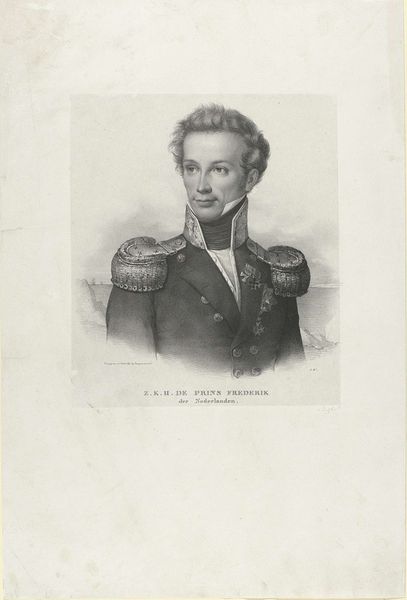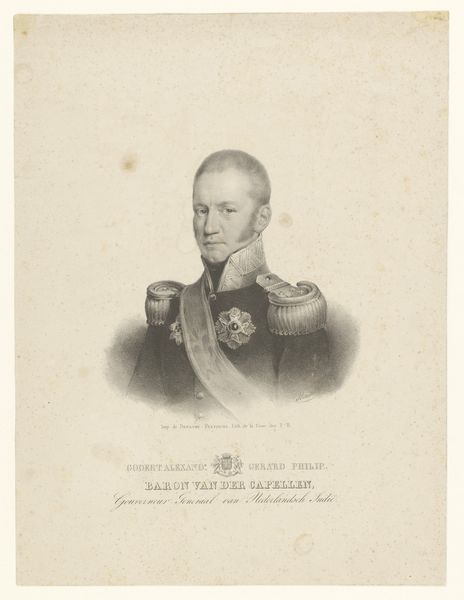
drawing, pencil
#
portrait
#
pencil drawn
#
drawing
#
pencil sketch
#
pencil drawing
#
romanticism
#
pencil
#
realism
Dimensions: height 174 mm, width 109 mm
Copyright: Rijks Museum: Open Domain
Editor: So, this is "Portret van Willem II, koning der Nederlanden" a pencil drawing dating from around 1810 to 1836, attributed to Philippus Velijn. The precision and formality of the portrait really stand out to me. What's your take on this piece? Curator: It’s more than just a portrait, isn’t it? It’s a carefully constructed image designed to project power and legitimacy, typical of the period following the Napoleonic Wars. Willem II, in his role, embodies the restored Dutch monarchy after a period of French rule, reflecting complex socio-political dynamics. Notice how the artist uses visual cues - his military attire and decorations - to reinforce his authority. Who do you think this portrait was *really* for? Editor: I suppose for the public, to reinforce his position. To show the king as a strong, capable leader. Curator: Precisely. But consider further the power structures at play. Portraits like this one served to quell any lingering Republican sentiments. The deliberate control of representation served as a crucial tool in re-establishing social hierarchies that had been disrupted by revolution. It subtly communicated who held power and who did not. Editor: That makes a lot of sense. So, even seemingly simple portraiture served very specific political purposes? Curator: Absolutely. Think of art not as isolated objects, but as documents reflecting the times and shaping people’s opinions. We need to be attentive to the relationship between art, politics and culture, as tools to challenge systems. What do you think such images communicate today? Editor: I suppose today we could view it with a critical eye, examining the relationship between power and representation, rather than simply accepting the image at face value. I definitely learned to look beyond the aesthetic qualities. Curator: Exactly. Critical engagement is key to art history.
Comments
No comments
Be the first to comment and join the conversation on the ultimate creative platform.
